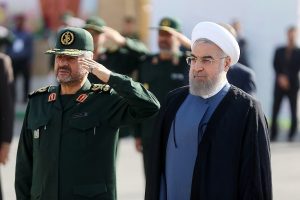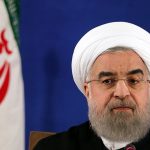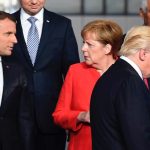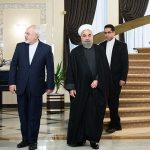By Derek Bolton
via the American Security Project
“It’s time to act before it’s too late”–the new ominous tagline featured in the Emergency Committee for Israel’s commercial trumpeting the need for action on Iran, rings with truth. It is time for the United States to act–act in a strategic way that will benefit its national security interests–and this means not undertaking a military strike against Iran.
The purely strategic implications of a U.S. strike on Iran will far outweigh any limited gains it may bring about and will be far more costly than many realize. It would also ultimately leave the U.S. in a much weaker and exposed position while creating a more volatile Iran that will be further inclined to gain nuclear weapons capability.
As Micah Zenko at the Council of Foreign Relations writes, “It’s true throughout history: there’s always the belief that the next war will go much better than the last war” and that when faced with a problem such as Iran, people “want to ‘do something,’ and nothing ‘does something’ like military force.” Thus, contrary to the simplistic ‘drop a few bombs and stop the bad guys’ viewpoint, the reality of this situation is far more complex, and any strike will ultimately lead to a broader and more devastating conflict.
Consider, for example, former DIA analyst and current defense fellow at the Washington Institute Jeffery White and his in-depth analysis on how a U.S. strike on Iran would play out. He writes:
While a war with Iran might begin in the military domain, it would likely expand to others, and while it might begin at the operational or tactical level it would soon encompass strategic and political levels as well.
There is no denying the U.S.’s technological or military superiority over Iran. However, one need only look to past and ongoing conflicts to see how this advantage can be outmaneuvered by enemies, and how the U.S. can find itself in a protracted conflict where by simply not winning, we lose.
Accordingly, should the U.S. attack Iran, even with the limited aim of striking its nuclear facilities, Iran would seek to expand and then protract the conflict in an attempt to erode the U.S.’s morale and commitment. One need only point to Iran’s conventional force structure, access to organizations such as Hezbollah, and strategic geographic positioning along the Strait of Hormuz, to highlight how Iran could widen the conflict.
As White surmises, the U.S. would quickly find itself, “involved in a “secret war” of terrorist attacks and special counter terror operations…a “political war” involving Iranian and allied diplomatic and information operations to weaken support from other states and actors … an “economic war” featuring Iranian efforts to disrupt the oil market… and a “social war” [that] would involve appeals to Islamic solidarity and attempts to weaken popular support.” White concludes that “[i]n such a broad and protracted contest, the United States might not enjoy a favorable balance of advantages”.
Focusing primarily on the military capabilities of Iran and its allies, one can forecast what an Iranian response may consist of. For starters, Iran has an arsenal of short-medium range ballistic missiles.
Short range missiles consist of the Fateh-110, Shahab-2 (also called the Scud-C), and CSS-8, though it should be noted that the “U.S. Air Force’s National Air and Space Intelligence Center estimates Iran has less than one hundred (PDF) short-range delivery systems”.
Meanwhile Iran’s medium range arsenal consists of the Shahab-3, believed to be ranged between 1,500–2,500 kilometers. In 2008 Iran also introduced the new Sajjil, which unlike the liquid-fueled Shahab-3, is solid fueled and can thus be launched in a matter of minutes instead of hours.
These missiles in turn would allow Iran to strike targets in Israel and Turkey, as well as U.S. instillations and forces in the region. Such attacks would have to be met with appropriate responses by the U.S. and its allies, expanding the scope of strikes from just nuclear facilities to military installations.
With regard to the Strait of Hormuz, a report from Harvard’s Olin Institute for Strategic studies has shown that should Iran close the strait with mines, missiles, and small boats,“it could take many weeks, even months, to restore the full flow of commerce, and more time still for the oil markets to be convinced that stability had returned.”
Iran also has first hand experience with naval engagement in the waters stemming from the Iran-Iraq war, and has tailored its current naval doctrine accordingly. Iran has access to small, mobile, and hard to detect systems and ships, easily deployable mine capabilities, and land based cruise missiles.
Having learned hard lessons from previous naval engagements with the U.S., Iran would in a future engagement focus on a passive defense or “a defense without weapons [that] comprises a range of measures that reduce vulnerability and increase endurance against foreign threats.” This would in turn allow Iran to conduct asymmetric naval operations against U.S. forces and disrupt or close the Strait of Hormuz.
Regarding Iran’s allies, Hezbollah now has access to far more advanced missiles and rockets than in the past. This arsenal is now accurate enough to pinpoint military installations and capable of launching 500-600 projectiles a day. Hezbollah also maintains its capacity to undertake terrorist operations against civilians and other targets. This would spread the conflict throughout the region.
There is also the possibility that in lieu of a conflict, Hezbollah could gain access to Syria’s P-800 Yakhont supersonic cruise missile system, allowing it to strike targets up to 300km from the Lebanese coast.
Table 5. Reported Hizballah Rockets and Missiles (source: Washington Institute)
System Type Range (km) Warhead Weight (kg) Supplier
Zelzal-2 Rocket 210 600 Iran
Nazeat Rocket 100–140 1300(6)/250(10) Iran
Fajr-3 Rocket 43 45 Iran
Fajr-5 Rocket 75 90 Iran
302 mm Rocket 75 100 Syria
220 mm Rocket 70 unknown Syria
122 mm Rocket 20–40 30 Iran/Syria
107 mm Rocket 6 unknown Iran/Syria
M600/Fateh-110 Missile 210–250 500 Iran/Syria
Scud variant Missile 300–700* 985 Syria
* Depending on variant: Scud-B, 300 km; Scud-C, 500 km; Syrian Scud-D, 700 km. The Scud system is not confirmed to be in Hizballah’s hands in Lebanon at present
Additionally, despite its technological inferiority compared to Hezbollah, one should not discount the role Hamas could play in a conflict. While its capabilities rest largely on mortars and rockets, Hamas is still capable of striking critical targets in Israel such as Tel Aviv, further aggravating the overall situation for the U.S. and expanding the scope and complexity of the conflict.
Syria too may feel compelled to intervene in some manner, though it is largely preoccupied with internal dissent and thus currently may be unable to play any sort of leading role in the conflict.
Iran is unlikely to use all the tricks in its bag at once. Being a rational actor, and one that does not seek its own demise, Iran will respond with appropriate levels of force. However, these actions will be geared towards expanding the conflict to a much broader field where U.S. military and technological advantage is reduced.
Any strike against Iran will likely require much more than we think. As a March 2012 Institute for Science and International Security (ISIS) report notes:
Limited bombing campaigns are unlikely to destroy Iran’s main capability to produce weapon-grade uranium…. Iran has dispersed its centrifuge program across many facilities, several whose locations remain secret. More importantly, Iran has mastered the construction of centrifuges and has likely even secretly stockpiled an unknown number of centrifuges…
Many analysts accordingly believe multiple sorties will be required, thereby expanding the scope of a strike and in turn the Iranian response.
Following a strike the U.S. will find itself in a prolonged conflict that will include conventional forces that are geared towards asymmetric warfare, an economic downturn and high oil prices stemming from instability in the Strait of Hormuz and non-state actors conducting operations across the region.
Soon U.S. escalation will be required to counter these challenges and it will eventually be forced to admit its shortcomings or double down and undertake the now forsaken term ‘regime change’. Should the U.S. undertake the former, it will have to live with a further destabilized region, yet another military setback, and an Iranian nuclear program most likely delayed, but far from destroyed.
As the ISIS report concludes:
An ineffective bombing campaign that does not eliminate these capabilities would leave Iran able to quickly rebuild its program and would motivate it to launch its own Manhattan Project, resulting in a Middle East region that is far more dangerous and unstable.
White similarly concludes that
A beaten, humiliated but still defiant Iran with essentially the same political system and approach to the region and the world would be a long-term, growing danger similar to Iraq after the First Gulf War (or Germany after World War I).
In short, if the U.S desires another long term engagement that will lead to further destabilization, a huge military and financial commitment and what will likely be Iranian commitment to nuclear weaponization, then it should start down the long road of ‘limited strikes against Iran’s nuclear facility’.
However, should the U.S. like to ‘act before it’s too late’ and undertake strategically responsible actions, it should refrain from militarily attacking Iran and continue to engage with it instead.
–Derek Bolton is a Policy Analyst and Research Intern at the American Security Project. Find his complete bio here.





The author perhaps fails to understand the Israelis and the Israeli Lobby – they WANT a regional conflagration that will indefinitely postpone loss of Occupied Palestine for the next 1000 yrs
They WANT the US to break the ice and engage in hot war against the Iranians, so the Iran War II, and Iran War III will follow as a matter of course over the next decades
The Israelis have NOTHING to lose that they are NOT already going to lose if they cannot involve the US in a 1000 yr war against Iran and Islam
I agree with the above comment concerning Israel. This has been clear from the statements of Israel’s own leaders and published documents going back decades.
In addition, it’s clear that the drivers of foreign policy in the US vis-a-vis the Middle East are the military-industrial complex, the oil companies, the banks who finance them, the Israel Lobby, and the neocons – all of whom stand to profit enormously – in the hundreds of billions of dollars – from any war in the area.
This was the case in Iraq and the case in Afghanistan. There is no doubt about that.
Nonetheless, everyone commenting on the Iranian issue completely ignores these facts, apparently under the delusion that since Iraq was a mess these factors no longer apply.
Well, but they do.
Everyone forgets the Suez Canal. The Iranians can cripple international oil trade and shipping by simply sinking a ship, or one a day in the Suez. Nasser did it before, so simple, so impossible to prevent.